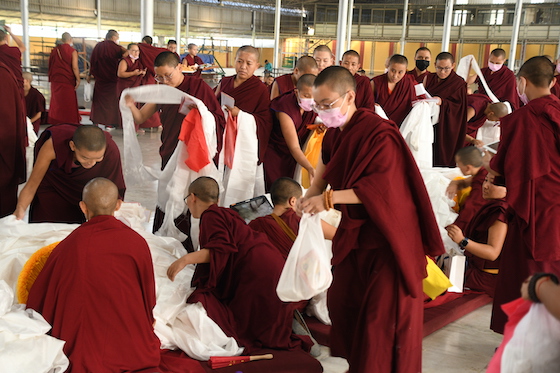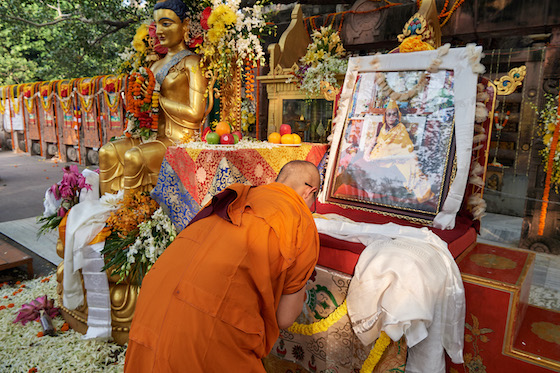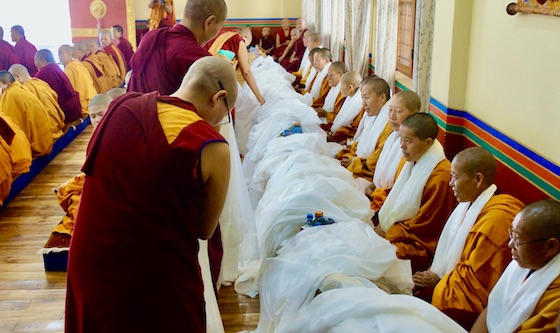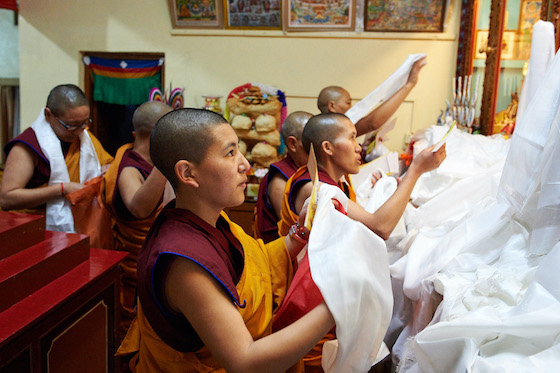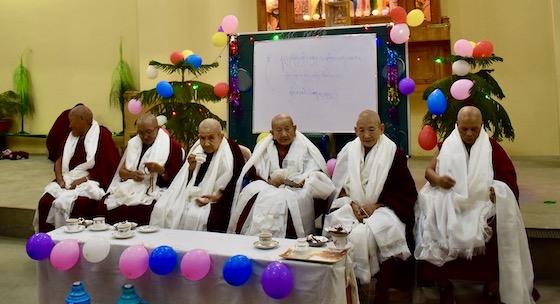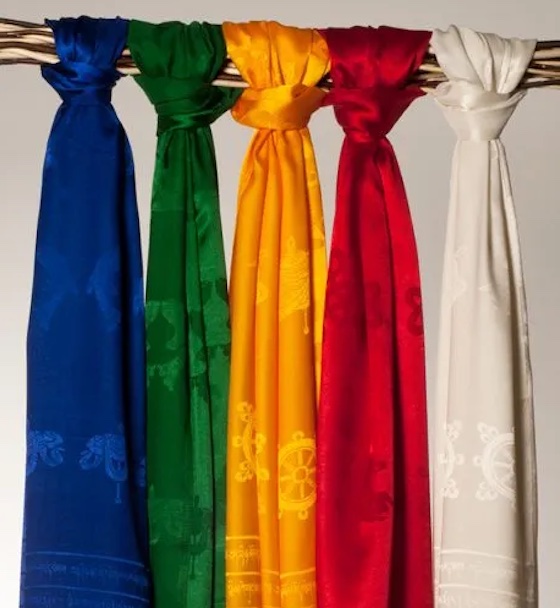On July 6th, His Holiness the Dalai Lama’s 88th birthday was celebrated by Tibetans worldwide with prayers for his good health and long life.
At Dolma Ling Nunnery and Institute, home to about 250 Tibetan Buddhist nuns, His Holiness’s birthday is always a day of big celebrations. This year the nuns marked the occasion with prayers, offerings, games, and cake. The Dolma Ling Media Nuns captured the fun with this series of photos and a short video.
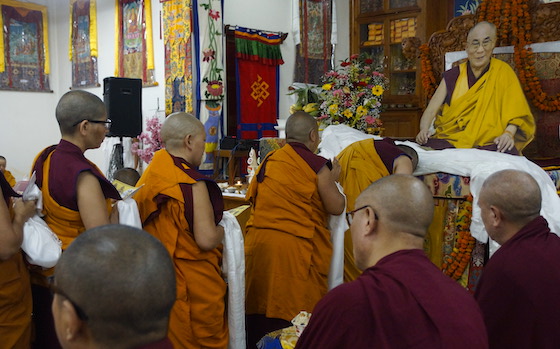
Nuns offering white prayer scarves or kataks to the portrait of His Holiness the Dalai Lama. Photo by the Dolma Ling Media Nuns
The day started early with the nuns, teachers and all the staff seated in the Dolma Ling prayer hall for prayers, tsok, and offerings of Tibetan prayer scarves to His Holiness the Dalai Lama whose portrait sits at the front.
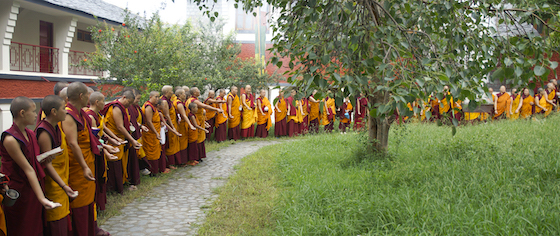
A circle of nuns from Dolma Ling Nunnery prepare to throw tsampa, roasted barley flour, in the air as an offering for His Holiness the Dalai Lama’s birthday. Photo by the Dolma Ling Media Nuns
On July 6th, His Holiness the Dalai Lama attended birthday celebrations at the main temple in Dharamsala. He said, “Today, you are celebrating my 88th birthday, but when I look in the mirror, I feel I look as if I’m still in my 50s. My face doesn’t look old, it isn’t wrinkled with age. What’s more I still have all my teeth so there’s nothing I can’t eat or chew.
“I was born in Tibet and I bear this name Dalai Lama, but in addition to working for the cause of Tibet, I’ve been working for the welfare of all sentient beings. I’ve done whatever I could without losing hope or allowing my determination to flag.”
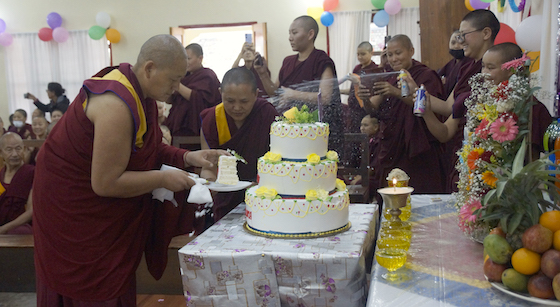
Part of this year’s festivities included a birthday cake in honor of His Holiness the Dalai Lama. Photo by the Dolma Ling Media Nuns
His Holiness the Dalai Lama also said, “I believe there is knowledge within Tibetan culture and religion that can benefit the world at large. However, I also respect all other religious traditions because they encourage their followers to cultivate love and compassion.”
“According to indications in my own dreams and other predictions, I expect to live to be more than 100 years old. I’ve served others until now and I’m determined to continue to do so. Please pray for my long life on that basis.”
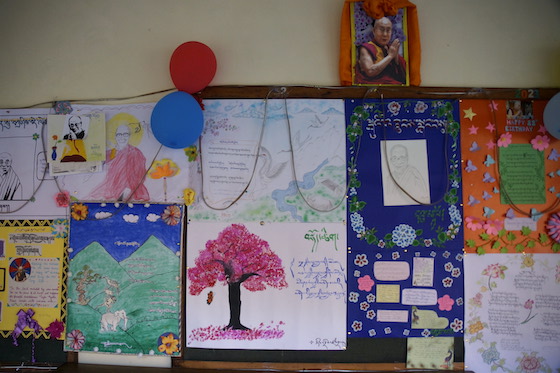
The bulletin board at Dolma Ling Nunnery displays birthday wishes and poems from the nuns to His Holiness the Dalai Lama.
Everyone enjoyed playing games such as a relay race and the bursting of a balloon tied to another person’s ankle. The nuns even played a game of basketball in the courtyard.
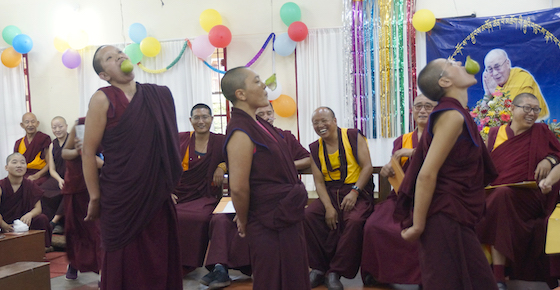
There was lots of laughter as the nuns tried to grab pears with their mouths. Photo by the Dolma Ling Media Nuns
His Holiness the Dalai Lama is the Patron of the Tibetan Nuns Project. He has always been very supportive of nuns’ education and opening up opportunities for higher degrees. The first conferment of Geshema degrees to Tibetan Buddhist nuns in 2016 fulfilled a longstanding aspiration of His Holiness.
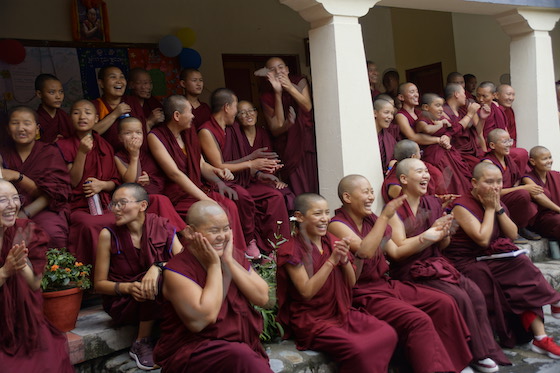
The courtyard of Dolma Ling Nunnery was filled with laughter as nuns watched the games and festivities marking His Holiness the Dalai Lama’s 88th birthday on July 6th. Photo by the Dolma Ling Media Nuns
Shortly after his birthday, His Holiness the Dalai Lama travelled to Ladakh where he will give teachings from July 21-23 on Gyalsey Thokme Sangpo’s 37 Practices of a Bodhisattva.
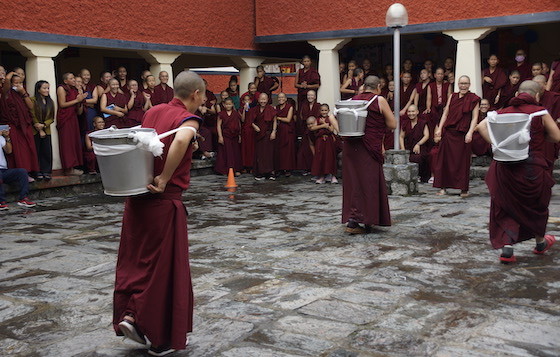
The nuns played a variety of games to celebrate the occasion, including this water bucket challenge. Photo by the Dolma Ling Media Nuns
The Dolma Ling Media Nuns also created this little video. Can’t see it? Click here.
At this time of year, Dolma Ling Nunnery holds an annual flower competition. The old debate courtyard at the nunnery fills with beautiful potted flowers placed in front of portraits of His Holiness. Scoring for the competition is done by the teachers.
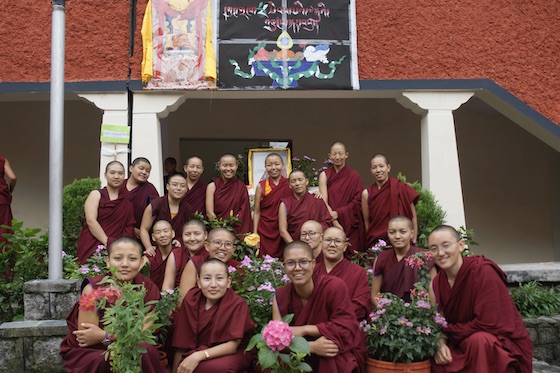
The annual flower contest at Dolma Ling Nunnery. Photo by the Dolma Ling Media Nuns.
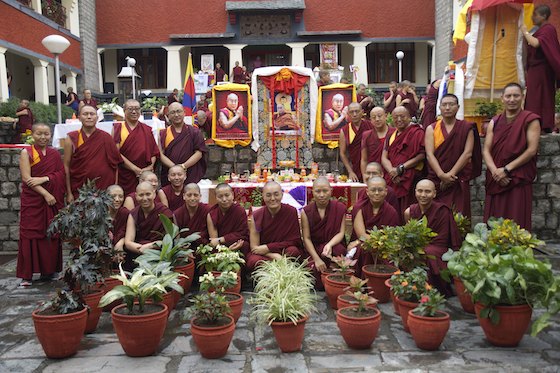
The nuns make posters, cards and banners, and grow flowers in celebration of His Holiness the Dalai Lama birthday. During the annual flower contest, the old debate courtyard is full of beautiful potted plants.
Thank you so much for supporting the nuns through the Tibetan Nuns Project!

